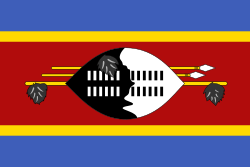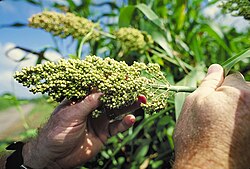This article needs additional citations for verification .(August 2011) |
| Part of a series on the |
| Culture of Eswatini |
|---|
 |
| People |
| Languages |
| Cuisine |
| Religion |
| Music |
The cuisine of Eswatini is largely determined by the seasons and the geographical region. Staple foods in Eswatini include sorghum and maize, [1] often served with goat meat, a very popular livestock there. [2] The farming industry mainly depends on sugar cane, tobacco, rice, corn, peanuts, and the exportation of goat meat and beef. Many Swazis are subsistence farmers who supplement their diet with food bought from markets.
Contents
Produce and imports from coastal nations are also part of the cuisine of Eswatini. [3] Some local markets have food stalls with traditional Swazi meat stew, sandwiches, maize meal and seasonal roasted corn on the cob. [3]





